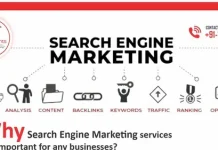Embarking on a website UX design project requires both methodical planning and creative vision. The most successful digital experiences emerge from a thoughtful process that balances user needs, business objectives, and technological possibilities. This holistic approach transforms websites from mere digital brochures into powerful tools that solve real problems while delighting users.
Understanding the Foundation
Every effective website UX project begins with discovery. This crucial phase involves deep immersion in the problem space before any design work begins. Stakeholder interviews reveal business goals and constraints, while competitive analysis uncovers industry patterns and opportunities for differentiation. User research through methods like contextual inquiry, surveys, or interviews illuminates the actual needs, pain points, and behaviors of target audiences.
This foundation of understanding prevents the common mistake of designing based on assumptions rather than evidence. The insights gathered during discovery become the north star guiding all subsequent design decisions, ensuring the final product solves genuine problems rather than imagined ones.
Defining the Strategy
With research insights in hand, the strategic phase transforms raw data into actionable direction. Creating user personas crystallizes research into archetypal representations of key audiences, making their needs tangible throughout the design process. Journey mapping visualizes the current experience, highlighting pain points and opportunities for improvement. Information architecture decisions establish the underlying structure that will organize content in ways that match users’ mental models.
Strategy documentation captures these decisions in shareable artifacts that align stakeholders and team members around a unified vision. This crucial alignment prevents the project from being pulled in contradictory directions by competing priorities or shifting requirements.
Crafting the Experience
The design phase brings strategy to life through increasingly detailed representations of the solution. Wireframing focuses initially on structure and flow rather than visual details, allowing rapid iteration on the fundamental user experience. As concepts solidify, interactive prototypes enable testing with real users to validate assumptions before significant development investment.
Throughout this process, design critique sessions provide opportunities to refine solutions through collaborative feedback. These structured conversations focus on how effectively the design meets established goals rather than subjective preferences, keeping the process grounded in strategy rather than opinion.
Visual design decisions then layer branding, personality, and emotional connection onto the validated experience structure. Typography, color, imagery, and motion work together to reinforce the brand while enhancing usability through visual hierarchy and feedback systems.
Executing with Excellence
The transition from design to development requires careful collaboration to preserve the intended experience. Design systems document components and patterns that maintain consistency while accelerating implementation. Ongoing communication between designers and developers ensures that technical constraints are addressed without compromising core experience goals.
User testing continues throughout development, catching usability issues early when they’re less costly to fix. This iterative refinement process acknowledges that no design is perfect initially and embraces continuous improvement.
Evolving Through Data
Launch marks the beginning rather than the end of the UX process. Analytics implementation captures user behavior data that reveals how the design performs in the real world. Heatmaps, session recordings, and conversion funnels illuminate where users engage deeply or encounter friction.
This quantitative data, combined with qualitative feedback from user testing or surveys, drives prioritization of enhancements. The most successful websites evolve continuously based on this evidence, treating the live site as a dynamic product rather than a static deliverable.
The art of website UX design lies in this balanced approach: rigorous in research and testing, creative in solution development, and humble in recognizing that every design benefits from continuous refinement based on real-world usage. By embracing this mindset, designers create websites that not only meet initial objectives but grow more valuable over time through evidence-based evolution.










